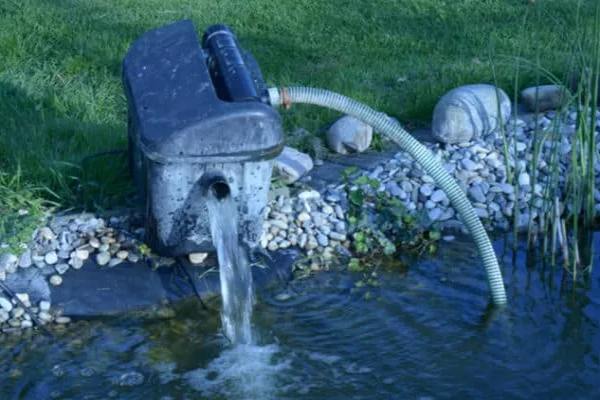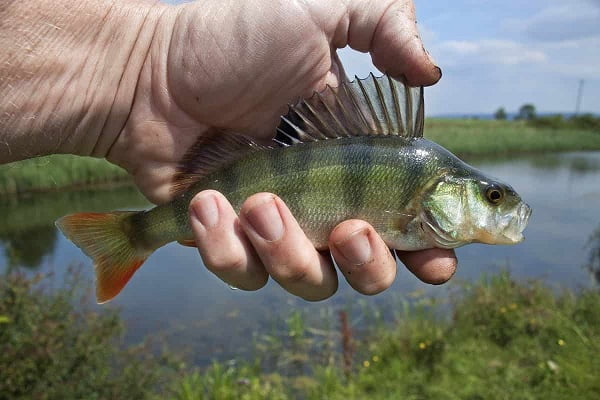How To Fix Pond Liner To Wood [Step-By-Step Guide]
The sight of a pond with koi fish swimming and the sound of water trickling is one of things that fish enthusiasts find fascinating.
However, before you can relax and enjoy all these, you have to install a pond liner that is durable and can also resist punctures. But what if you’re not financially buoyant enough to get such a pond liner?
Well, not to worry, we’ve got you covered. If you read this blog post to the end, you will learn how to fix a pond liner to wood to enhance its durability.
Without wasting time, let’s jump right into the steps.
How to Install a Pond Liner
Here’s a step by step guide to installing a pond liner;
Choose the right pond liner
Choosing the appropriate pond liner is crucial before you begin digging or laying anything down in your pond.
PVC, EPDM, and butyl rubber are just a handful of the materials used to make pond liners.
It’s crucial to consider the benefits and drawbacks of each liner type before deciding which is ideal for your pond.
Dig Your Pond
After settling on a pond liner, you can begin excavating. Before you start digging, you should have a good sense of the dimensions and shape of your pond.
Keep in mind that your pond liner will need some breathing space around the perimeter to fit correctly.
The pond’s bottom should be smooth and devoid of anything that could puncture the liner, such as sharp rocks or other debris.
Install Underlayment
After excavation, the next thing you should do is install underlayment. You know, the ground and your pond liner need to be separated, and that is what an underlayment does.
It also prevents your liner from being damaged by the ground’s natural abrasives, such as rocks and roots. Used carpet, newspapers, or underlayment material are all viable options.
Spread your pond liner over the excavated hole
Place the rolled-up liner in the center of the hole. Spread it out along the entire hole. Depending on the size, this can be done by one person or a group. Next, walk on the spread liner to ensure that it’s properly spread.
If you have carefully sized your pond and purchased the liner correctly, you should have no trouble lining the pond with a single sheet. However, don’t worry if you couldn’t get the correct size. To cover the entire pond, simply link together additional sheets.
Let the liner stretch
Make sure to leave enough area for the liner to reach beyond the top of the pond before securing it with stones or other heavy objects to prevent it from slipping as you spread it over the hole.
The ideal distance is one to two feet. Filling the pond with a little water will allow the liner to spread out evenly.
Fold over the edges
When the liner is in place, the edges should be folded over. A watertight seal can then be formed around the edges of your pond.
Carefully bring the liner’s edge up and over the pond’s lip in a neat, equal fold. You can keep your liner’s edges in place with stones or other heavy materials.
Build your wood frame
After settling on a pond liner, you can move on to constructing the pond’s wooden framework. You can use any kind of wood you desire, although cedar or redwood are good options because they resist decay and rot.
Frame your pond by cutting wood to the appropriate dimensions and then securing it together with screws or nails.
Secure the liner to the wood frame
After constructing your wooden frame, the next step is to attach the liner to the frame. You can start at one corner and work your way around. You can use tacks or gum to keep it secure.
Work your way around the pond, checking that the liner is smooth and taut at each turn. In places where the liner is very flimsy, you may need to reinforce it with more staples or tacks.
Fill the pond
You can fill your pond with water after the liner has been fastened to the wooden framework.
As the water level increases, manually flatten the liner to remove bubbles. Then you may customize it as you desire by including rocks, vegetation, or even a fountain.
Keep a watch on your pond for the first few days, because the liner may need to be topped off with water while it settles into place.
What not to do when fixing your pond liner to a wood
Now that you have known how to attach a pond liner to wood, Let’s look at common mistakes you should avoid while doing this.
Using a small pond liner
The truth is, having a liner that is too small causes nothing but trouble. Your fish will be left swimming in a muddy mess as a result of the leaks and tears.
Take accurate measurements of your pond so you can choose a liner that will completely enclose it.
Poor aeration
Most pond owners usually disregard proper pond aeration, despite its importance. If your pond doesn’t have enough circulation, algae will flourish, and your fish won’t get enough oxygen.
Additionally, this can lead to liner damage. So, do well to get an aerator for your pond to help your fish stay healthy.
Getting a cheap pond liner
Although it may be tempting to purchase the least expensive pond liner available, this is not the time to economize.
Cheap liners are usually thin, weak, and easily damaged by the sun and weather. Buying a high-quality liner will reduce maintenance costs and the frequency of liner replacements.
You should stay away from liners made of plastic or those that are 20-30mm thick.
Not protecting your pond liner
Keeping your liner safe is equally important. Sharp items, gravel, and even the wood itself can puncture your lining if you aren’t careful.
You can cushion the liner on hard floors by placing a layer of sand or felt underneath it.
And of course, take extra precautions not to rip the liner while working around the pond.
Not treating wood before using
Although it could be tempting to try to save money by choosing untreated wood, doing so is not a good idea.
Wet conditions accelerate the decay and degradation of untreated wood, which can cause structural problems or even collapse.
It’s best to choose treated wood, which can endure moisture and decay better than untreated wood.
Conclusion
Obviously, you have learned how to fix a pond liner to wood. As you can see in the blog post, having a stunning pond of your dreams is possible with the right pond liner material, expert installation, and regular maintenance.
FAQs
You will need a pond liner, double-sided tape, scissors, a paintbrush, and some paint.
First, you need to make sure the area is dry and free of debris. Clean the wood of any dust or debris, and smooth out any splinters. Add a coat of primer or sealer and leave it to dry completely.
If your pond liner is larger than the wood surface, you can cut it to size using scissors. Leave an adequate overhang around the edges to ensure a tight fit.

![How Much Does It Cost To Dig A Pond? [Rough Estimate]](https://pondmemo.com/wp-content/uploads/2023/05/how-much-does-it-cost-to-dig-a-pond-img_1-img.jpg)
![Do Fish Get Bothered by Pond Lights? [Pond Lighting]](https://pondmemo.com/wp-content/uploads/2023/08/do-fish-get-bothered-by-pond-lights-img_1.jpg)



![How To Stop Your Pond From Overflowing [Pond Overflow Fix]](https://pondmemo.com/wp-content/uploads/2023/05/how-to-stop-your-pond-from-overflowing-1-img.jpg)